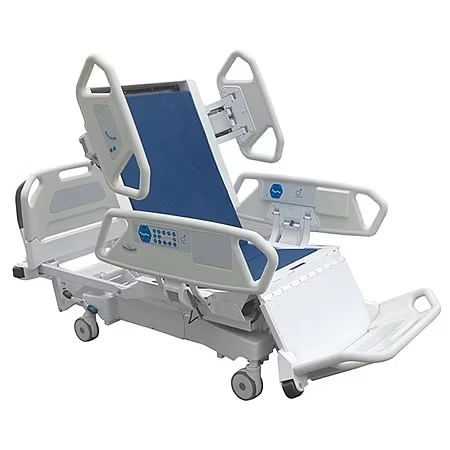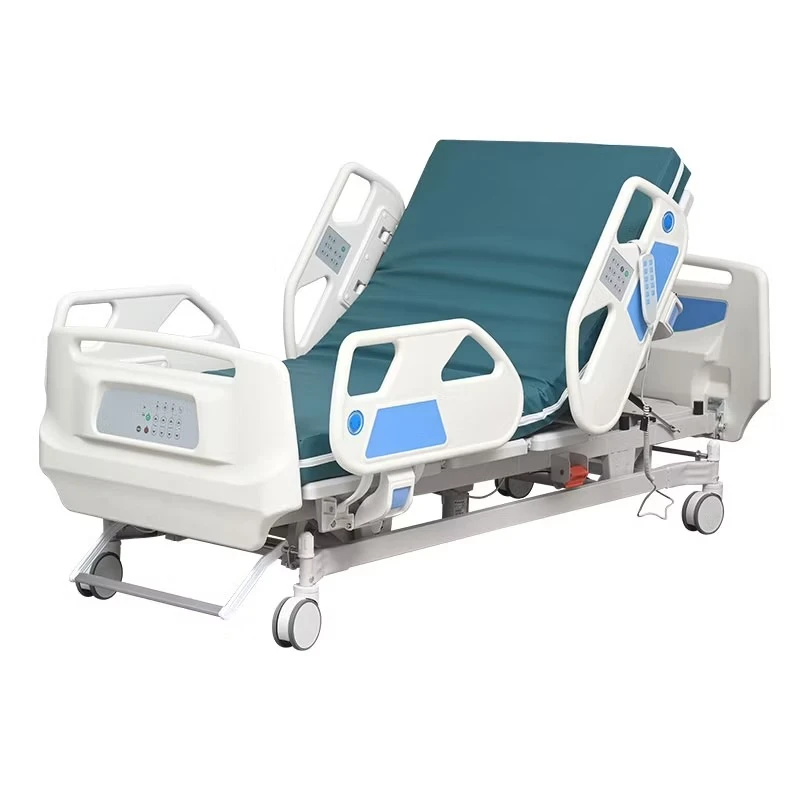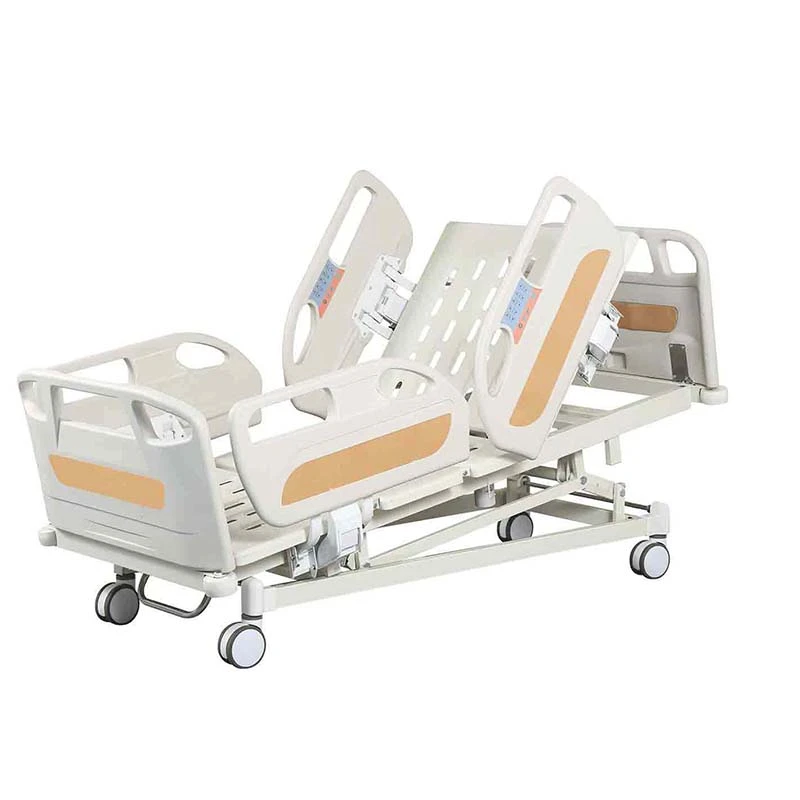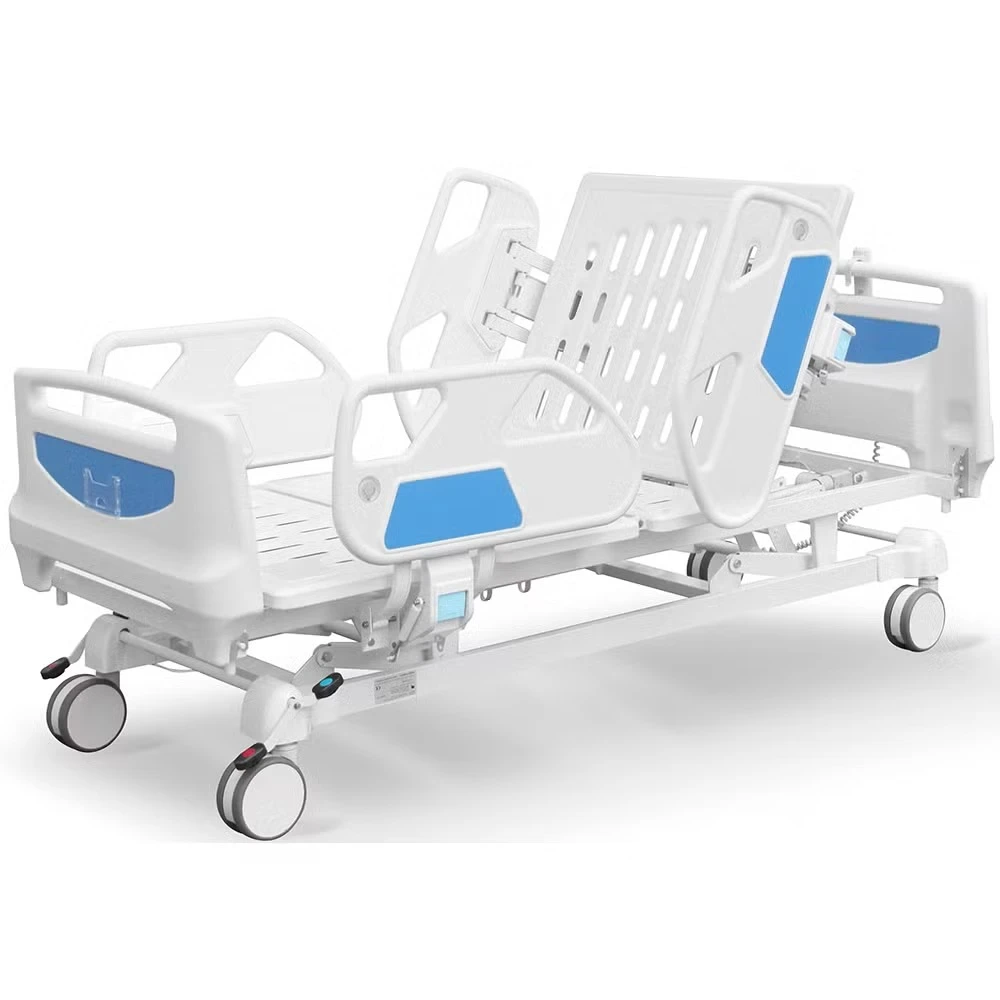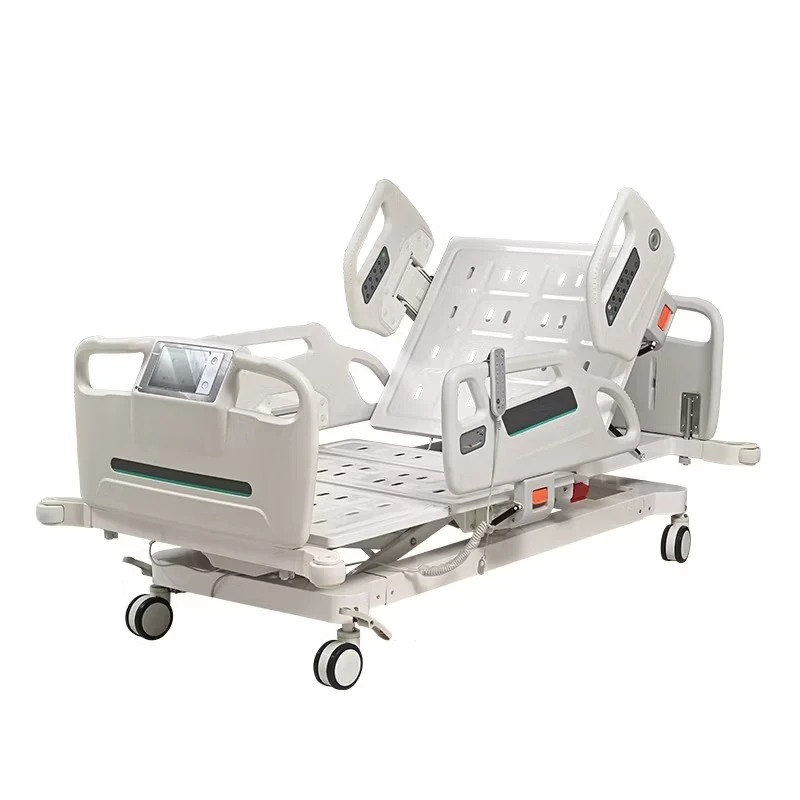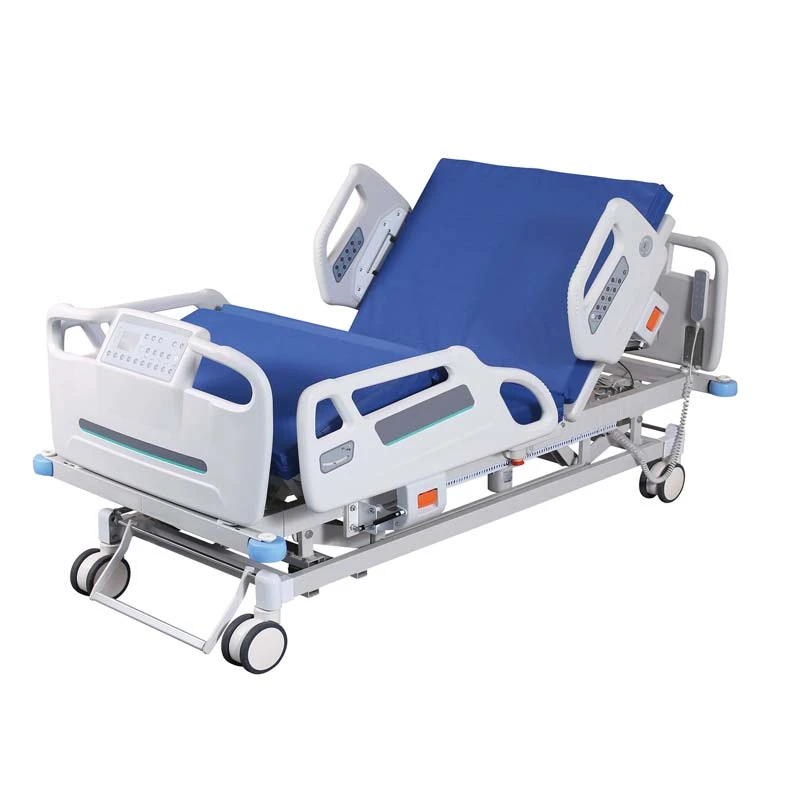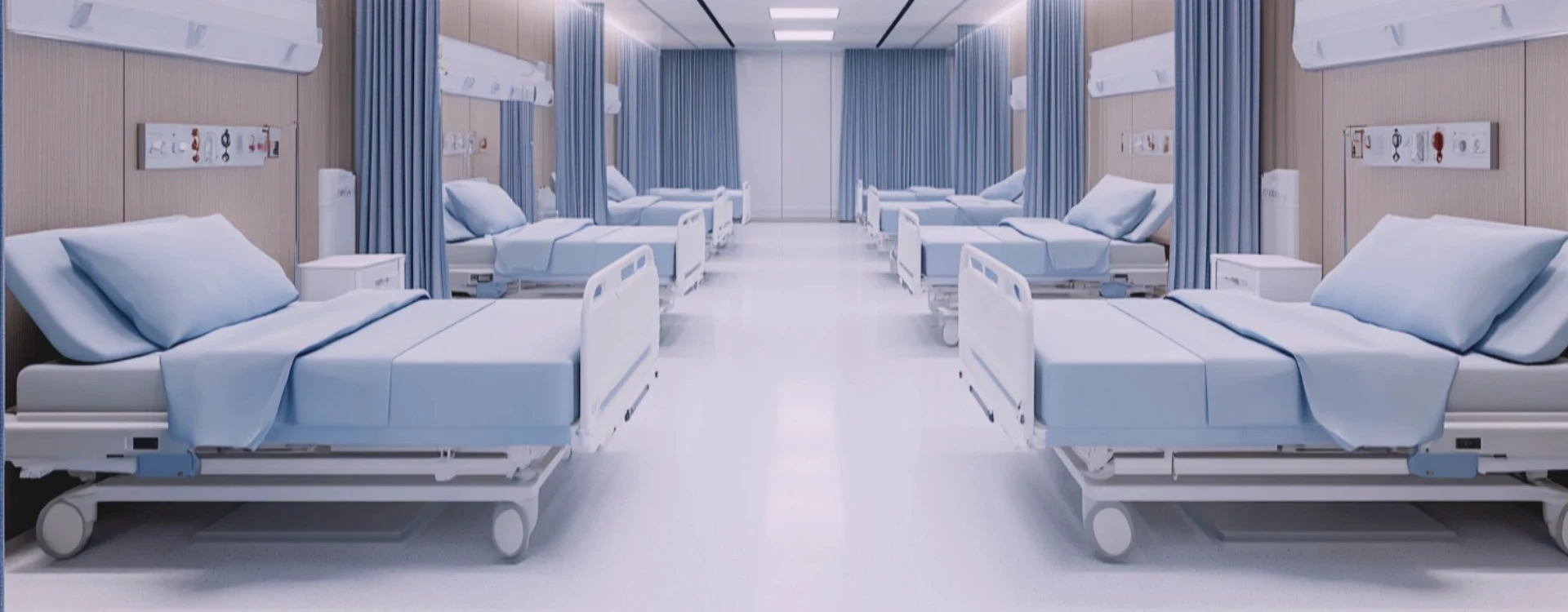
ICU hospital beds are specialized medical beds designed to provide critical care patients with maximum comfort, safety, and support while allowing healthcare professionals to perform necessary treatments efficiently. These beds come with advanced features such as electric height, backrest, and knee adjustments, allowing precise positioning for patient comfort and medical procedures. Many ICU beds also feature Trendelenburg and reverse Trendelenburg functions, which assist in improving circulation and respiratory function. Integrated side rails with controls enhance patient safety while minimizing the risk of falls. ICU beds often have built-in weighing systems, which allow continuous monitoring of a patient’s weight without moving them. They are equipped with advanced monitoring systems, including sensors for detecting patient movement and bed-exit alarms to alert nurses. Some models feature built-in CPR functions for emergency situations, allowing quick flattening of the bed. The bed frame is typically made of durable, easy-to-clean materials with antimicrobial properties to maintain hygiene. Lockable caster wheels ensure stability while enabling easy movement within the ICU. The integration of these features helps in reducing the workload of medical staff, improving patient outcomes, and ensuring better overall critical care management.
How Do ICU Hospital Beds Improve Patient Care And Safety?
ICU hospital beds play a crucial role in enhancing patient care and safety by offering advanced features that facilitate treatment and recovery. These beds allow for easy repositioning, which helps in preventing pressure ulcers and improving blood circulation in immobilized patients. The adjustable backrest and knee support help in reducing respiratory distress, aiding in better lung function for patients on ventilators. The Trendelenburg and reverse Trendelenburg positions assist in managing blood pressure, shock conditions, and specific medical treatments. Built-in side rails with control panels ensure patient safety while allowing them to adjust the bed independently when possible. ICU beds also feature integrated patient monitoring systems, including weight measurement and movement detection, which help healthcare professionals track a patient’s condition without disturbing them. Emergency features such as the CPR mode and quick-adjustment settings allow medical teams to respond rapidly to life-threatening situations. The beds’ ergonomic design reduces the risk of strain or injury for both patients and caregivers. Some models are also compatible with smart hospital systems, integrating with monitoring devices to provide real-time data on patient status. By incorporating these essential features, ICU hospital beds significantly enhance patient safety, reduce complications, and streamline medical care for critically ill patients.
What Factors Should Be Considered When Choosing An ICU Hospital Bed?
Selecting the right ICU hospital bed requires careful consideration of factors such as patient needs, medical functionality, durability, and ease of operation. The bed should have full electric controls, allowing smooth and precise adjustments for patient positioning. Safety features, such as adjustable side rails, bed-exit alarms, and lockable wheels, are essential to minimize risks for both patients and caregivers. The bed’s weight capacity should be adequate for different patient types, ensuring stability and durability. Hygiene is another critical factor—beds with antimicrobial coatings and seamless surfaces prevent infections and are easier to clean. A built-in weighing scale and patient monitoring system can be beneficial for tracking patient progress without frequent repositioning. For facilities with space constraints, beds with compact yet adjustable designs are ideal. Battery backup options ensure functionality during power failures, which is crucial for continuous patient support. Additionally, compatibility with medical equipment, such as ventilators and IV poles, should be assessed to ensure seamless integration into ICU environments. Hospitals should also consider models with smart connectivity features, which allow integration with electronic health records (EHR) and remote monitoring systems. By evaluating these aspects, healthcare facilities can invest in ICU beds that enhance patient comfort, improve clinical efficiency, and ensure the highest standards of critical care.



 PDF
PDF